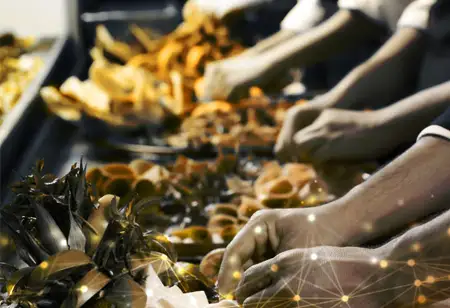Thank you for Subscribing to Food Business Review Weekly Brief
How Does the Bread-Making Process Work?
Historically, high-speed bakers used the term "bread processing" to refer to the contribution of dough molding or makeup stages to the manufacturing of bread.

By
Food Business Review | Friday, December 17, 2021
Stay ahead of the industry with exclusive feature stories on the top companies, expert insights and the latest news delivered straight to your inbox. Subscribe today.

While bread-making may appear daunting at first, it will become less daunting once bakers understand the necessity of each step and have the tools required to complete each step.
FREMONT CA: Historically, high-speed bakers used the term "bread processing" to refer to the contribution of dough molding or makeup stages to the manufacturing of bread. Today, it refers to a broader process encompassing the entire manufacturing of breads and buns. It is a multi-step process that includes mixing, fermentation, makeup, proofing, baking, cooling, slicing, and packaging. Due to their critical nature, these processes must be carefully monitored and operated following predetermined conditions and specifications.
Application
The style and type of bread dictate the dough system to be used and the mixing, makeup, and baking conditions. When making ciabatta or white pan bread, the baker does not want to produce a loaf with a dense crumb structure or one similar to ciabatta in terms of crumb structure and texture.
While each step of bread processing is critical for success, most bakers would agree that the three most essential steps are mixing, fermentation, and baking. They are frequently called to as the "heart and soul" of the bread-making operation and can also influence the finished product's characteristics on both an internal and external level.
Mixing
The goal is to combine and hydrate dry ingredients, incorporate air, and develop gluten for optimal dough handling properties. Monitoring and controlling variables including mixing time, energy input, and dough temperature—mixing time is dependent on the strength of the flour, its protein content, the amount of damaged starch and non-starch polysaccharides, and the amount of bran particles. Additionally, mixer speed, mixing arm design, dough size concerning mixer capacity, refrigeration system adequacy (dough temperature), and delayed sugar/fat/salt addition are all factors to consider.
Vertical (planetary), spiral (open and closed for vacuum mixing), horizontal, and continuous mixing equipment are available (open and closed). 9–15 minutes at high speed in horizontal mixers. The final temperature of the dough should be 76–82°F (25–28°C).
Fermentation
This experiment aims to grow yeast, produce CO2, ethanol, and organic acids, develop flavors and aromas and modify the dough handling properties. Fermentation time, temperature, titratable acidity (TTA), pH, and microbial count are all variables to monitor and control.
The temperature of the dough, sponge, starter, or pre-ferment, the hydration level (free water), the pH, the osmotic pressure, the yeast food (amino acids, minerals, fermentable sugars), and the yeast level all influence the fermentation time (or lactic acid bacteria count).
Fermentation equipment includes troughs, closed tanks, open tanks, and benches. 1–20 hours (at room temperature), depending on the dough system used. Fermentation rooms are typically set to 75–85°F (24–29°C) with relative humidity (RH) of 60–80 percent.
Makeup
The makeup stage consists of four operations—dividing, rounding, proofreading intermediate, fabrication, and molding.
The divider divides bulk dough into pieces of appropriate weight (with the least amount of stress possible on the dough), which can then be rounded and rested before taking their final shape. The divider must quickly process the entire dough load to avoid excessive gassing, which results in scaling errors.
Sheeter and molder are interchangeable terms that refer to the sheeting stage, curling chain, pressure board, and guide bars. These factors affect the structure, shape, and length of the dough piece placed in the pan. Adjust the molder to achieve the desired shape with the slightest pressure and stress on the dough to avoid damaging the cell structure formed during mixing and fermentation.
Baking
The objective is to convert raw dough into bread, establish the product's structure, form the crust and crumb, eliminate the kill step, and extend the product's shelf life. Temperature and time are variables to monitor and control (governed in continuous ovens by conveying speed). Additionally, variables such as heat flux (burners), humidity (dampers), and air velocity or flow are relevant.
Baking time is determined by the oven temperature, the conveying speed, the initial (proofed dough) and final product temperatures, the heating pattern, bake loss, the product load, and the formulation.
All types of baking equipment are direct-fired ovens, electric ovens, rack ovens, reel ovens, conveyorized, tunnel, hybrid, and impingement ovens. 10–20 minutes at 400–420°F (204–216°C) (heating patterns in different ovens must be equivalent for comparable results).






